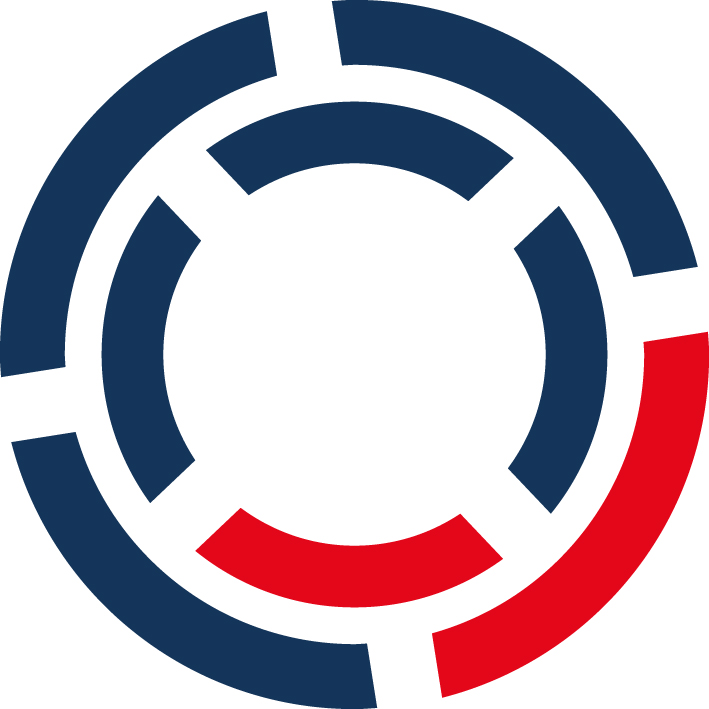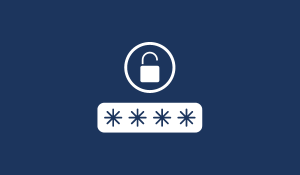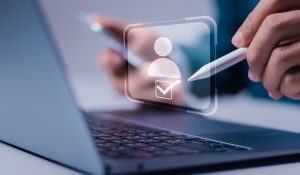User management in cybersecurity: your key to greater security
User management is a cornerstone of robust cybersecurity strategies. Whether you are an experienced IT professional in a critical sector such as...
5 min read
 DriveLock
Jun 11, 2025 12:43:04 PM
DriveLock
Jun 11, 2025 12:43:04 PM

Companies are faced with the constant task of protecting their digital assets. This is particularly essential in healthcare, where patient data must be protected, in manufacturing, where production secrets are sensitive, or for operators of critical infrastructure, where stability is a top priority. The cornerstone of these protective measures is the clear definition and enforcement of access rights. We are talking here about access management, the key to preventing unauthorized access and maintaining control over your systems.
| CONTENT |
This blog post looks at what access management is, how it works and why it's essential for any organization, regardless of size or industry. We also look at access management in the context of wider identity and access management and give you five essential tips for implementation.
Access management, often referred to as access administration, is the foundation of any effective IT security strategy. At its core, it is about precisely controlling who can access which digital resources and under what specific conditions this access is granted. Think of your company network as a building with many rooms in which valuable information and important tools are stored. Access Management is the security service that decides who can open which doors and use which tools.
This system ensures that only authorized persons, devices or even other systems are given the necessary permissions to access certain data, applications, servers or network services. It effectively prevents unauthorized persons from gaining access to sensitive information, manipulating critical systems or disrupting business-critical processes.
Think of access management as the comprehensive set of rules and tools that determine who can access which resources within an organisation – and under what conditions. It is a holistic process that revolves around providing the right people or systems with the appropriate permissions at the right time. The goal? To ensure that only authorised entities have access to the information and systems they need to do their jobs, while consistently preventing unauthorised access.
Privileged access management (PAM) occupies a prominent position within the overall framework of access management. While general access management regulates access for all users and roles, PAM focuses exclusively on managing and securing ‘highly privileged’ accounts. These are accounts that have extensive powers over critical IT systems, sensitive data and the entire infrastructure – essentially the ‘master keys’ to the company.
Privileged Access Management ensures that this powerful access is strictly controlled, monitored and logged to prevent misuse by insiders or compromise by external attackers. It is the pinnacle of access management, dedicated to the most potentially dangerous and impactful access points, providing an essential additional layer of security for your organisation's digital crown jewels.
Access management does not simply run in the background, but follows a structured, multi-stage process that is run through for every access request:
Identification: the first step is always identification. A user, whether human or system, must clearly state who they are. This is typically done by means of a unique user name, a system ID or a digital signature. Without a clear identity, the process cannot continue.
Authentication: Once the identity has been claimed, it must be verified. This is the process of authentication. This is where the user proves that they are who they claim to be. The most common methods are
Passwords: the classic "something you know".
Two-factor authentication (2FA) / multi-factor authentication (MFA): An additional layer of security that combines two or more independent factors (e.g. password + code from smartphone, fingerprint + smartcard). This significantly increases security, even if a password is compromised.
Biometric features: "Something you are" (e.g. fingerprint, face scan).
Digital certificates/hardware tokens: "Something you own". The access management process only continues if authentication is successful.
Authorization: Once the user has been successfully authenticated, authorization follows. This determines which specific actions the authenticated user is allowed to perform and which resources they can access. This is the "What am I allowed to do?" part of access management. Authorizations are assigned based on predefined policies, which can be very granular:
Role-based permissions: A user is assigned access rights based on their role in the company (e.g. "read permission for everyone in purchasing", "write permission for the HR department").
Attribute-based authorizations: Access can also depend on certain attributes of the user or resource (e.g. "Only managers from department X may access data from customer Y").
Individual authorizations: Rarely, but possible, specific authorizations can also be assigned to individual users.
Auditing and monitoring: The final but crucial step is auditing and monitoring. Every access request, every successful login, every access attempt and every action performed is logged in full. These logs are essential in order to:
Detect unusual activity or potential security threats.
Verify adherence to internal guidelines and external compliance regulations.
In the event of a security incident, enable accurate tracking and identify the cause. A robust access management system provides detailed audit trails that can serve as important forensic evidence.
Without effective access management, you open the door to a variety of security risks:
Preventing unauthorized access: this is the most obvious benefit. By restricting access to authorized individuals, the risk of data leaks, tampering or sabotage by external attackers or internal threats is minimized. Careful access management is essential here.
Adherence to compliance regulations: Many industries, especially healthcare (e.g. GDPR in the context of patient data), manufacturing (confidentiality of production processes) and critical infrastructures, are subject to strict regulatory requirements. Robust access management helps you to comply with these regulations and avoid costly penalties.
Minimize internal threats: Not all threats come from the outside. An employee with excessive access rights who leaves the company or has fraudulent intentions can cause considerable damage. The least privilege principle is crucial for access management here.
Improved efficiency and productivity: Sounds paradoxical, but it's true. Well-structured access management ensures that employees can quickly and easily access the resources they need for their work without being held up by unnecessary authorization requests.
Faster response to security incidents: In the event of an attack or compromise , detailed access management allows you to quickly identify the source of the problem, isolate the damage and initiate targeted countermeasures.
While basic access management focuses on controlling access to specific resources, identity and access management (IAM) is a more comprehensive, strategic approach.
IAM extends pure access management to include the management of the entire lifecycle of a digital identity. This means:
Comprehensive identity management: IAM not only deals with user names and passwords, but also with the creation, maintenance and deletion of user accounts, their attributes and the linking of identities across different systems.
Single Sign-On (SSO): A core element of many IAM systems is SSO, which allows users to log in once and access multiple, independent applications and services without having to re-authenticate. This not only increases user-friendliness, but also security, as fewer passwords need to be managed.
Automated provisioning/deprovisioning: IAM systems can automate the assignment and revocation of access rights based on role changes or the departure of employees. This reduces manual errors and security gaps in access management.
Centralized policy management: IAM enables the centralized definition and enforcement of access policies across the entire IT landscape, improving consistency and control.
In short, while access management regulates the "what" and "who" of access, IAM integrates this into a more comprehensive approach that covers the entire identity and access lifecycle, often utilizing more advanced technologies and automation. For larger organizations and complex IT environments, IAM is often the preferred access management solution.
To keep your access management up to date and your organization optimally protected, consider the following five tips:
Implement the principle of least privilege: Grant users only the minimum access rights they need to perform their tasks. Regularly remove unnecessary authorizations. This reduces the attack surface and minimizes the potential damage if access management is compromised.
Use multi-factor authentication (MFA): Today, a password alone is no longer sufficient. MFA adds a second or third layer of security (e.g. a code from a smartphone, a fingerprint). This is one of the most effective steps to defend against phishing and brute force attacks.
Introduce role-based access control (RBAC): Instead of managing authorizations individually, define roles (e.g. "financial accountant", "production employee") and assign the appropriate access rights to these roles. Then assign users to these roles. This simplifies access management considerably and ensures consistency.
Regular review and auditing: Carry out periodic reviews of access rights to ensure that they are still appropriate and up to date. Log all access and activity and analyze these logs regularly for unusual patterns. Automated tools can be a great help here.
Employee training and awareness: The best technical solution is only as good as the awareness and behavior of the users. Train your employees regularly on secure password handling, the risks of phishing and the importance of access management. You are the first line of defense!
Access management is not a one-off task, but an ongoing process that requires constant attention. It is a fundamental part of any robust IT security strategy and essential to protect your sensitive data and critical systems from unauthorized access. By actively living the principles of access management in your company and continuously optimizing access management, you lay the foundation for a secure and resilient digital future.

User management is a cornerstone of robust cybersecurity strategies. Whether you are an experienced IT professional in a critical sector such as...

Digital life is now inseparable from daily life. We manage our finances, communicate with loved ones, and store sensitive information all online. But...

Managing user identities and access rights is one of the biggest challenges facing organizations. With ever-increasing cyber threats and the need to...